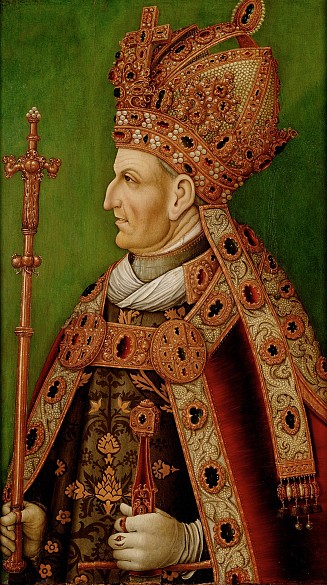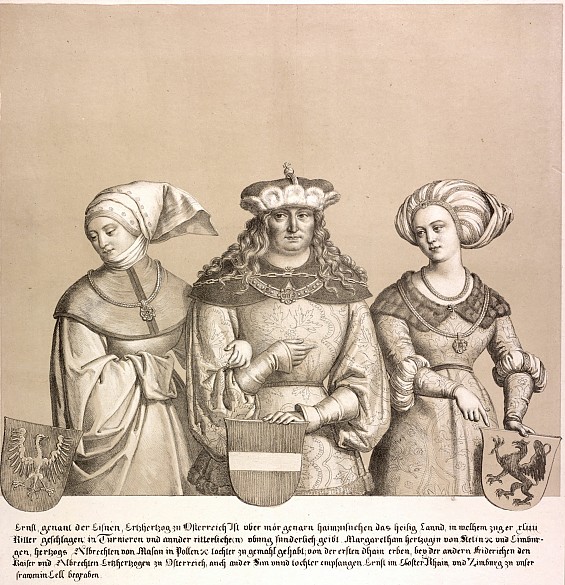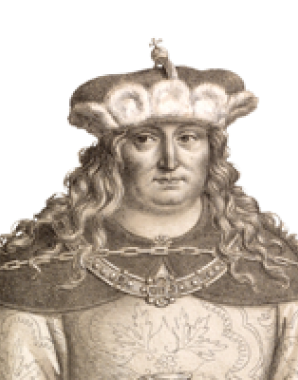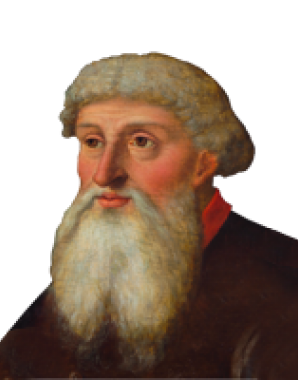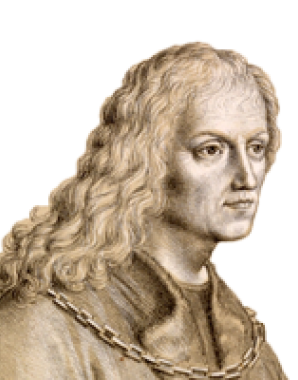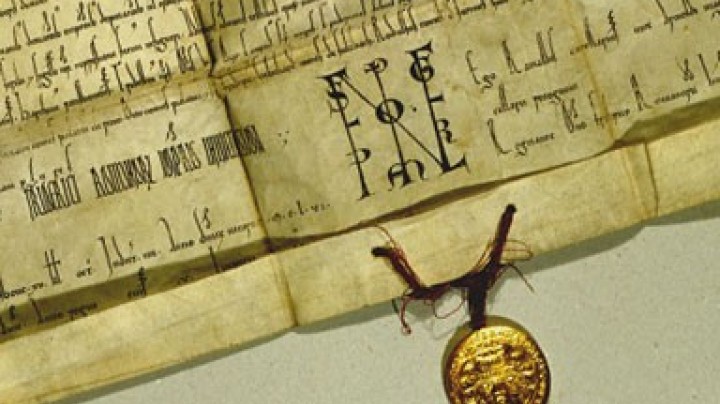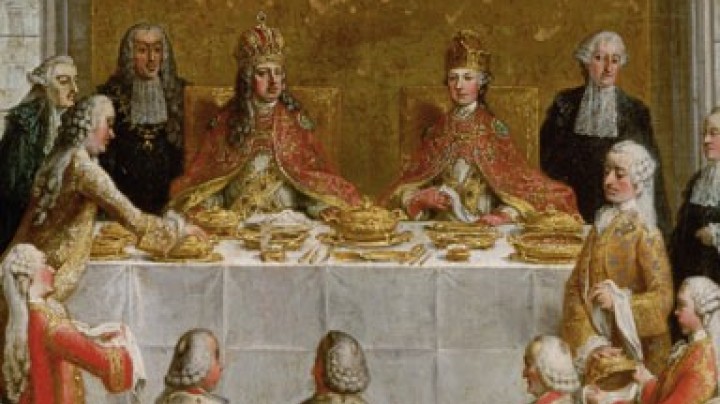A weak yet tenacious emperor: Frederick III
Frederick III was the longest-reigning emperor of the Holy Roman Empire, ruling for 53 years. He is also famous for his device composed of the letter sequence ‘AEIOU’, although it has never been conclusively decoded.
Frederick was born in 1415 to Ernest ‘the Iron’ and Cymburgis of Masovia. His father died when Frederick was only nine years old, and his uncle Duke Frederick IV was appointed his guardian. In 1435, when he had attained his majority, Frederick became regent of the duchies of Styria, Carinthia and Carniola. Even then, the young duke was developing ambitious plans for the ‘House of Austria’: Frederick’s sense of mission is expressed in the device consisting of the letters ‘AEIOU’ that he put on buildings, objects, monuments, coins and documents as a sign of his possession. One interpretation of this device is ‘Austriae est imperare orbi universo’ – ‘It is Austria’s destiny to rule the whole world’. However, this and the many other interpretations of the device originated in later ages.
After his uncle’s death, Frederick took his place as head of the family. As such he also assumed the guardianship over his cousin Sigismund, who had inherited Tyrol, and one year later that of his nephew Ladislaus, heir to the duchies on the Danube. As ruler of Austria, Frederick now found himself in constant conflict with the local nobility who opposed his role as guardian: in 1441 the unpopular ‘Styrian’ Frederick was insulted by an aristocrat as the ‘King of the Jews’ in the Augustinerkirche in Vienna; twenty years previously, King Albrecht II had done his best to annihilate the Jewish community in Vienna. Under mounting pressure, Frederick was forced to flee the city.
Despite his weakness as a ruler, Frederick was elected Roman-German king in 1440. One of his allies was Pope Nicholas V; in 1448 pontiff and king concluded the Vienna Concordat, which remained in force until the end of the Holy Roman Empire. This paved the way for the establishing of Vienna as a bishopric and diocese in its own right – and also for the coronation of Frederick as emperor in Rome, the only instance of a Habsburg achieving this ultimate accolade.
On the way to his coronation, Frederick was presented with his bride, the fifteen-year-old Eleonora of Portugal, before the gates of Siena. On 9 March 1452 the royal train with around 5,000 horsemen made its ceremonial entry into Rome. The coronation ceremony and mass followed on 19 March at St Peter’s. An idea of the huge expense entailed by the event is given by the cost of Frederick’s coronation mantle, said to have been 200,000 gulden. After the coronation the emperor processed through the Italian cities, accepting homage.
